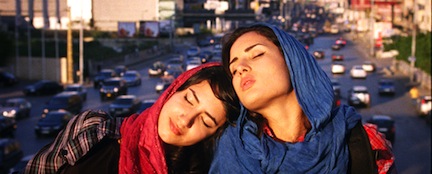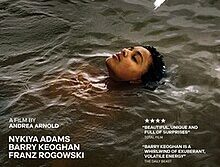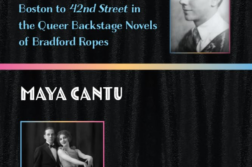THE GREAT FILMMAKER Jean-Luc Godard said somewhere that art is not a reflection of reality; it is the reality of that reflection. That being the case, to judge by the feature films coming out of the Sundance Film Festival this past January, it seems that GLBT youths are finding cinema to be the outlet with which to express the oppression of living in the closet and the freedom of coming out, both as individuals and as artists.
This year’s festival opened with a world premiere screening of a film called Pariah. Written and directed by Dee Rees, an acolyte of Spike Lee, Pariah follows the life of seventeen-year-old Alike, a girl from a working-class family who presents herself one way at home and a very different way at school, at nightclubs, and in her writing. Rees’ directorial debut consists of several scenes which demonstrate that anyone over the age of eighteen in Alike’s African-American neighborhood is homophobic. It is only when Alike comes out of the closet that she begins to find her true literary voice. (Note: Focus Features picked up Pariah at Sundance.)
Another film about struggle and freedom regarding open sexual orientation was writer-director Rashaad Ernesto Green’s Gun Hill Road. Set in a Latino Bronx neighborhood, Enrique (played by Esai Morales) returns home from prison, where he was anally raped, to find his teenage son Michael going through a transformation that the machismo ex-con does not understand. Since Vanessa, who is also a writer, and her/his mother Angela do not disclose the young person’s changes, Enrique becomes more and more violent in his confusion over sexual identity and orientation. Thanks to the casting of Harmony Santana, who was going though a sexual transformation of her own at the time, Gun Hill Road offers an authenticity in a film all too reminiscent of a recent Sundance Film Festival hit, La Mission, starring Benjamin Bratt, a lifelong macho man who will not accept his son’s homosexuality. In addition to the authenticity behind newcomer Santana, Morales brings a professional weight to the film that is sometimes marred by poor camera choices but refuses to give in to a happy Hollywood ending (unlike La Mission).

Another film of note was writer-director Maryam Keshavarz’s politically radical Circumstance. Set in modern Iran, where homosexuality is subject to the death sentence, Atafeh and her best friend Shireen live among the privileged classes but suffer the oppression of the ruling theocracy. As best friends and lovers, Atafeh and Shireen are under constant threat of being found out and arrested by the morals police. As the two fall further and further under the theocratic and patriarchal eye of the ayatollah, their love faces impossible odds. A structurally accomplished film that would displease the Iranian authorities if they ever got wind of it, Circumstance uses the two girls to illustrate the dilemma facing women in general in Iran, and especially those who love other women. Circumstance was shot in Lebanon.
Interestingly enough, these three first-time directors all addressed coming out and being gay as dominant themes, while some veteran GLBT filmmakers essentially ignored the issue altogether, throwing in elements of polysexuality as a matter of course. Gregg Araki (2004’s Mysterious Skin, 1992’s The Living End) made a splash with his latest film, Kaboom, about a conspiracy to take over the world or blow it up while trying. While there were some homophobic characters (albeit closeted ones), the characters, apparently comfortable in their sexual identities, were getting on with their lives.
Then there was Madeleine Olnek’s Codependent Lesbian From Outer Space Seeks Same, a hilarious feature debut from the New York playwright. Set in modern-day New York, this riotously funny film is about three extraterrestrial lesbians who fall to earth in search of women who will break their hearts. Destined to be a cult favorite, the film is a send-up of the old B movies about alien invaders and doomed home planets.
Veteran filmmakers Fenton Bailey and Randy Barbato (The Eyes of Tammy Faye; Inside Deep Throat) returned to Sundance with Becoming Chaz, the story of Chastity Bono’s transformation to Chaz Bono. As Chaz was already out as a man to her family and friends (and the rest of the world), the issue she faced was the inner psychological turmoil caused by bringing one’s body into line with one’s psyche. Another veteran director, Jonathan Caouette (Tarnation; All Tomorrow’s Parties), entered a maddeningly idiosyncratic short film called All Flowers in Time, featuring an experimental narrative structure about one boy and his relationship with “manu-fractured” images of male models and with his mom.
John Esther, a freelance writer based in Los Angeles, is a frequent contributor to this magazine.






